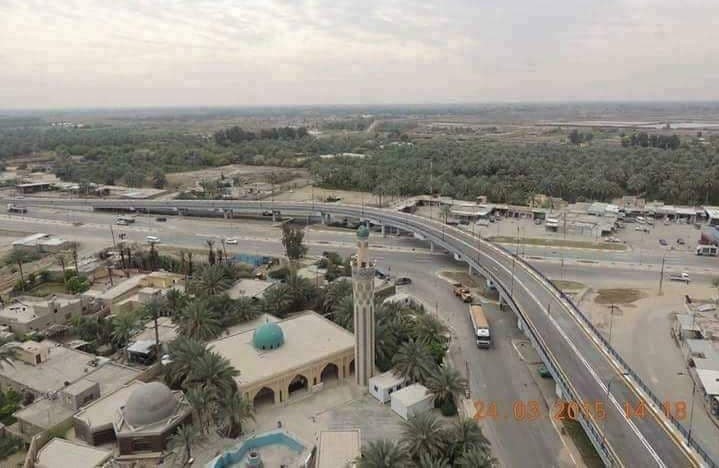At a time when the military leadership re-talked about what it called “the death of ISIS”, Isis had launched two attacks on two towns, one of which was declared secured about five times under the supervision of 3 successive heads of government. The assessments of the military leaders often conflict with local security reports in some hot cities and the estimates of the tribal fighters closest to the event, such as the disagreement over the numbers of what remains of “ISIS”.
With the previous government of Haider al-Abadi announcing the end of “ISIS” at the end of 2017 – a declaration that was later described as hasty – the organization changed its skin several times, but did not change the “tactic of buying loyalists.”
In the last two attacks in the towns of Hawija, southwest of Kirkuk, and Tarmiyah, north of Baghdad, the “incubators” were completely relied upon, fueled by the crisis of the presence of armed factions this time, as is the case in Tarmiyah in particular.
Tarmiyah sixth time!
Since Thursday, the security forces and local fighters have been searching for militants believed to be affiliated with ISIS who tried to control an area in Tarmiyah.
The gunmen, who are likely to number no more than five, attempted, in cooperation with “local sources,” to storm the Bismit area in Tarmiyah, before they clashed with the security forces and fighters from the district’s residents and fled to an unknown destination.
Security sources in Baghdad told Al-Mada that “the armed factions, especially those called wilaya (a metaphor for distinguishing between groups that take the command of the Hashd and the government, and others that take their orders from mostly religious and usually Iranian sides) when they jump in the form of events are counterproductive.”
Armed factions had suddenly arrived in Tarmiyah last month, hours after the government announced the killing of important leaders of the “ISIS” organization in one of the orchards of the district.
And the source continues in “Tarmiyah, those parties deliberately appear in the events after every security breach and their accounts on social media platforms begin to promote the issue of demobilized areas,” as has been going on in Jurf al-Sakhr for about 6 years, as the most successful security solution.
According to the sources, these news and the presence of these groups “contribute to feeding supporters and making it easier for ISIS to buy resources, whether popular or even in official institutions,” because of the fear of reprisals carried out by these factions.
Many security leaders complain of “leakage of plans” or “flight of militants” hours before their arrival due to “a breach in the security system.”
The matter became more dangerous when those collaborating with the security forces began to “back down” as their names leaked to the organization, or many of them were subjected to physical liquidations.
Tahseen al-Khafaji, a spokesman for the joint operations, confirms that ISIS: “It still exists and poses a threat to the security forces, by taking advantage of the sleeper cells that took advantage of the rules of engagement during the war and hid among the civilians.”
But he also says during statements to the official agency that “the terrorist ISIS is in a dying state in Iraq, and all of its members cannot return to normal life as their hands are stained with blood, so the organization is making desperate attempts to prove its influence.”
“ISIS” manages its operations in Tarmiyah with the help of armed men from the district, known to everyone, from within the vast orchards that extend to Kadhimiya in the south and Samarra in the north, which complicates the process of eliminating the organization in the town near the capital (about 20 km from Baghdad).
After the security forces and the tribal mobilization attacked a meeting of “ISIS” leaders in Basateen Al-Bu Suhail, last February, and the governor of Tarmiyah Shaker Sahi Al-Mashhadani was killed, local officials told Al-Mada that “what happened is not the end of the story.”
Tarmiyah had declared it a safe area about 5 times, two of them during the government of Haider al-Abadi, and three in subsequent governments, as Adel Abdul Mahdi visited it in 2019 and Mustafa al-Kazemi twice, the last of which was last February, and all of them came to announce the restoration of stability operations.
How many “ISIS” remains?
Dozens of “ISIS” are expected to be in the dense orchards. There is often great discrepancy in estimating the numbers of what remains of the “ISIS” organization, especially in Salah al-Din and Kirkuk.
In the recent statements of the Joint Operations Command, Al-Khafaji said that “the number of ISIS terrorist operatives in Iraq ranges between 100 and 150 members,” explaining that “these launch attacks in small groups of 3 members.”
But the assessments of local officials and tribal crowd leaders count another number of remaining “ISIS” elements, amounting to about 1,000, including a large number in southwestern Kirkuk.
A member of AL alhashd alshaebi Forces was killed and two federal police were wounded during clashes with armed men affiliated with “ISIS” in Hawija.
The clash took place while the security forces tried to repel an attack by the armed men on the Albanian control at the eastern entrance to the district.
Ahmed Khurshid, a local official in Hawija, said in a statement to Al-Mada that “the judiciary is still containing unknown numbers of militants and sleeper cells.”
The militants spread in water bodies surrounding Hawija and covered with high forests, while Hawija, after the liberation of Mosul in July 2017, contained about a thousand “ISIS” members.

 Nominating a new parliament speaker without any immediate solutions since last year, 2023.
Nominating a new parliament speaker without any immediate solutions since last year, 2023. On the memory of the genocide that the marshes were subjected to, who are the Ahwarians?
On the memory of the genocide that the marshes were subjected to, who are the Ahwarians? Muqtada al-Sadr’s militia attack the Green Zone in Baghdad
Muqtada al-Sadr’s militia attack the Green Zone in Baghdad The environmental activist Jassim al-Asadi, who seeks to protect the marshes in Iraq, has been kidnapped on 1/2/2023.wed
The environmental activist Jassim al-Asadi, who seeks to protect the marshes in Iraq, has been kidnapped on 1/2/2023.wed Working women in Iraq – the way to work is not safe
Working women in Iraq – the way to work is not safe Urgent: Total chaos inside Iraq, imposing a curfew, general closure of all government institutions, in addition to leaving most of the embassies of foreign countries in Baghdad.
Urgent: Total chaos inside Iraq, imposing a curfew, general closure of all government institutions, in addition to leaving most of the embassies of foreign countries in Baghdad.














